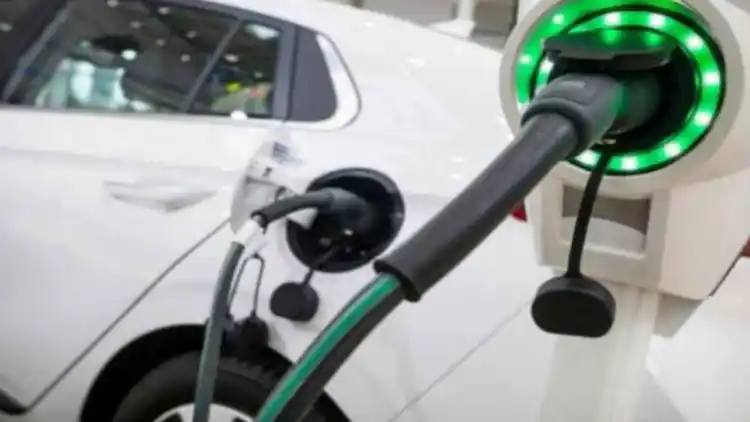- How Car Dynamos Power Your Daily Drive
- Why Modern Drivers Still Need Dynamo Knowledge
- Future-Proofing Your Vehicle's Charging System
- When to Seek Professional Help
- FAQ
Curious about what is a dynamo in cars? In 2025, this essential part keeps your vehicle’s electrical system running efficiently. This guide explains how it works, its role in charging, and maintenance tips for better performance.

How Car Dynamos Power Your Daily Drive
3 Signs Your Dynamo Needs Attention (2025 Update)
If you notice dimming headlights at idle speeds, it might be the dynamo struggling to produce enough power. A battery warning light on your dashboard or unusual whining sounds from the engine area are clear signals that your alternator or dynamo is under stress. Keep in mind that modern dynamos, often interchanged with the term alternator, convert mechanical energy into electrical power with efficiency around 85-90%, ensuring your car battery and other electrical components perform optimally.
Why Modern Drivers Still Need Dynamo Knowledge
Key Components Working With Your Car's Dynamo
Your car’s charging system isn’t just about the dynamo; it involves a voltage regulator, a drive belt system, and an integrated battery management computer. The voltage regulator plays a crucial role by keeping the output between 13.5-14.5 volts, following GCC certification standards. Understanding the interplay of these electrical components will boost your confidence in handling routine maintenance tasks and troubleshooting any issues that arise.
2025 Maintenance Checklist
To ensure your alternator remains reliable:
Test the charging output every 6 months to verify it meets the required parameters.
Inspect the drive belt tension annually, ensuring it does not slip or wear prematurely.
Clean all electrical connections during each service to prevent corrosion and maintain optimal performance.
Taking these steps can help you avoid unexpected failures, especially when facing high-temperature conditions which can affect battery performance in regions using AED/SAR pricing standards.
Future-Proofing Your Vehicle's Charging System
Smart Alternator Upgrades for 2025 Models
Modern charging systems are now integrating new technologies that optimize fuel efficiency and component longevity. Consider these advanced features:
Feature | Benefit |
|---|---|
Regenerative braking support | Can boost fuel efficiency by up to 15% |
AI-powered load management | Prolongs the lifespan of electrical components |
Modular design | Enables 40% faster parts replacement and easier upgrades |
These innovations ensure that your vehicle’s dynamo remains compatible with smart alternator systems which are quickly becoming the norm in new car models.

When to Seek Professional Help
If you experience repeated battery drain, detect a burning smell from the engine compartment, or notice the dashboard voltage dropping below 12V, it’s time to get professional assistance. These issues often point to a failing dynamo or alternator. Trust the expertise of certified local service centers who can perform thorough diagnostic checks and align your maintenance with GCC-approved standards. Quick action can prevent further damage and ensure your safety on the road.
FAQ
Q1:What exactly is a dynamo in cars and how does it differ from an alternator?The term dynamo traditionally refers to a device that converts mechanical energy to electrical energy, but in modern cars, it is more commonly known as an alternator. While both serve the same function, alternators are equipped with a voltage regulator that ensures the output remains steady between 13.5 and 14.5 volts. Car owners should note that understanding this system is crucial for troubleshooting related issues such as unexpected battery drain or inconsistent charging. This knowledge helps you make informed decisions about maintenance and repairs, especially in high-demand environments.
Q2:How can I tell if my car’s dynamo is failing?Watch out for common symptoms such as dimming headlights, especially when your car is idling. An illuminated battery warning light or unusual engine sounds can also be red flags. Regularly checking these indicators can help you detect issues early and reduce the risk of sudden breakdowns. If these signs occur, consider scheduling a diagnostic check with a qualified technician who uses GCC standards to verify the performance of your charging system.
Q3:What routine maintenance does my car’s charging system require?Routine maintenance for your car’s dynamo or alternator involves several simple checks:testing the charging output biannually, inspecting the tension of the drive belt annually, and cleaning electrical connections during every service visit. These measures ensure that your dynamo continues to function effectively, supporting your car battery and overall electrical components. Maintaining a well-serviced charging system is critical for vehicle reliability, especially in high-temperature climates where battery performance can be impacted.
Q4:Are there smart alternator upgrades available for newer vehicles?Yes, modern vehicles are increasingly offering smart alternator upgrades that integrate features like regenerative braking support and AI-powered load management. These upgrades are designed to improve fuel efficiency and extend the lifespan of your vehicle’s electrical components, making the charging system more adaptive and efficient. For car owners looking to upgrade, these innovations provide a glimpse into the future of automotive charging solutions while adhering to the emerging GCC certification standards.
This article is for reference purposes only. Please comply with local regulations.













